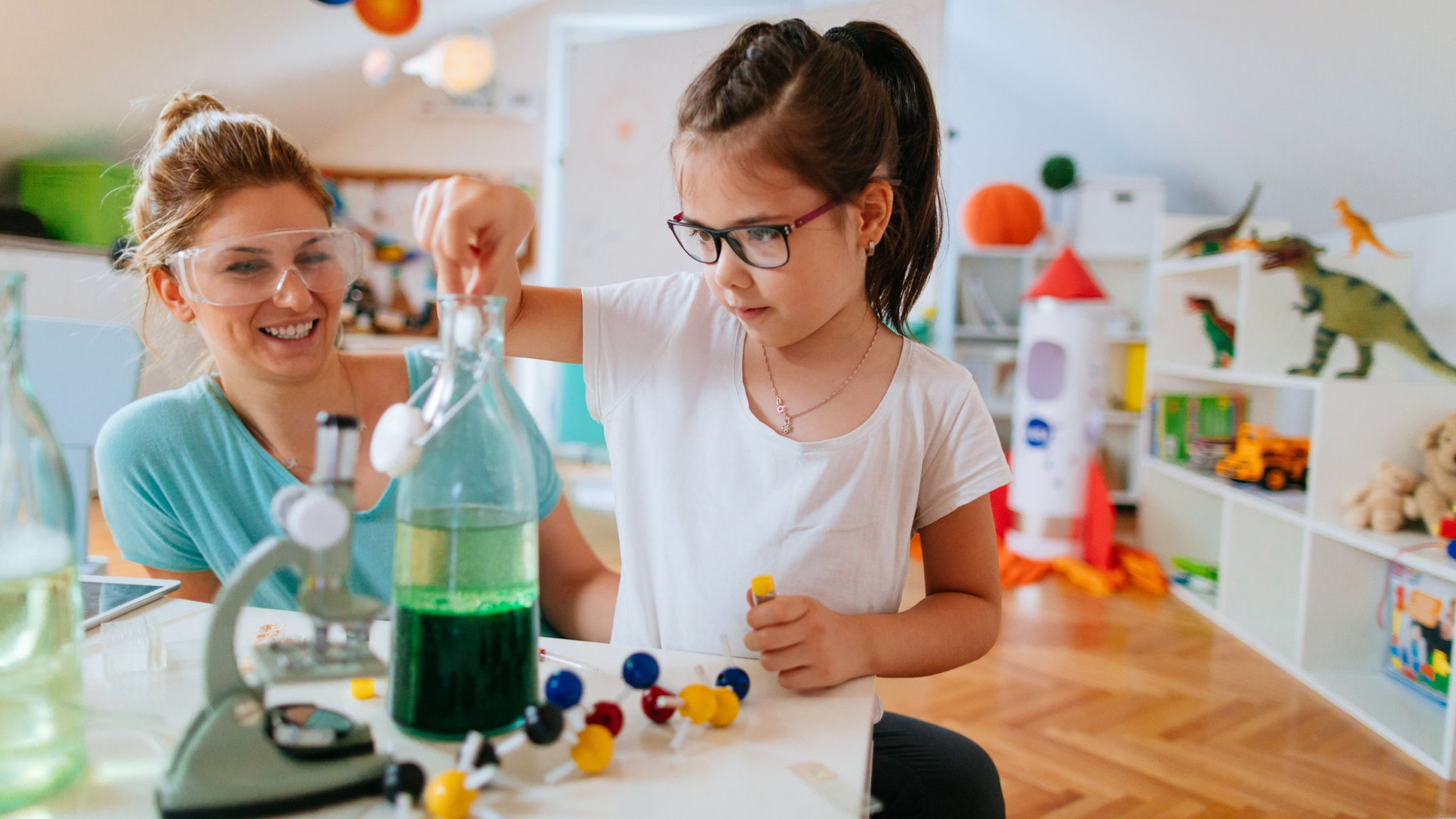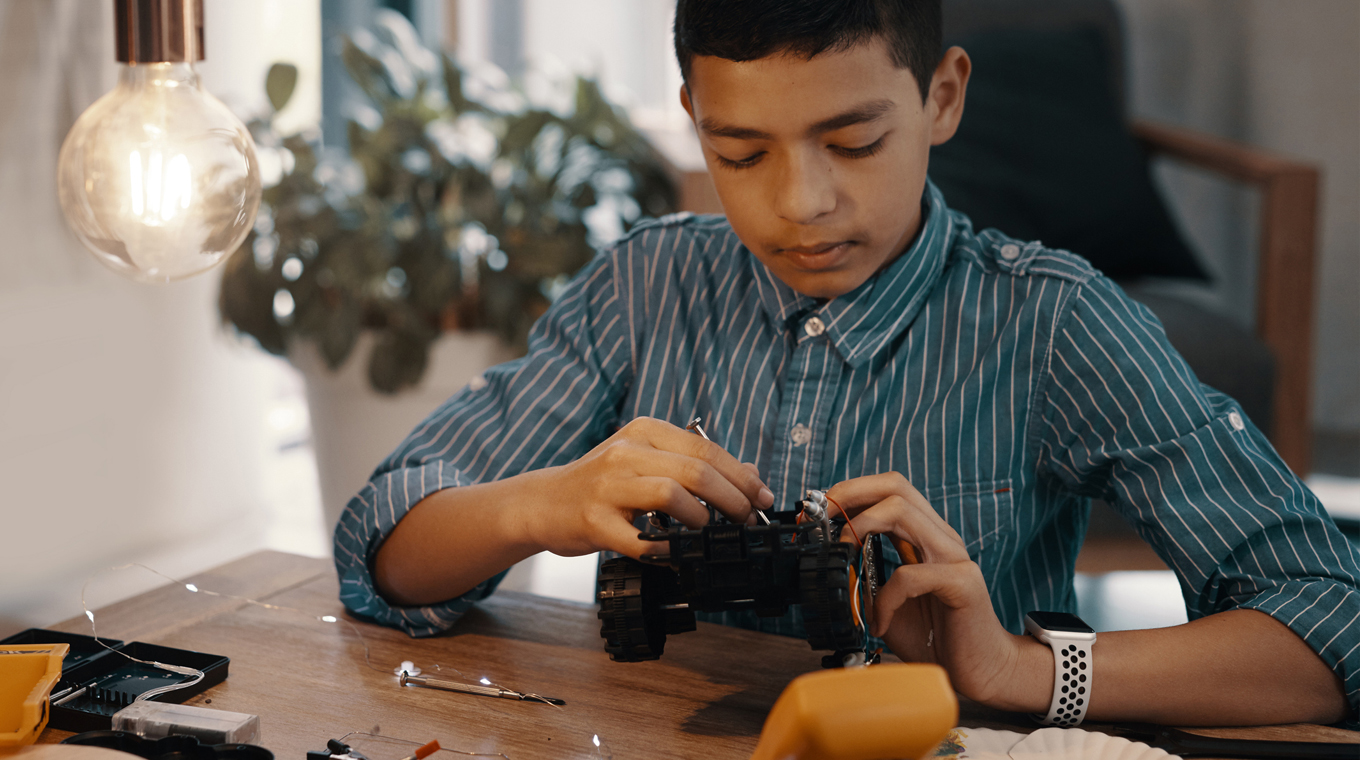
In this article
Exploring science with kids at home is a great way to expand on what they're learning in school, and a great way to add interest to their day if they're doing virtual learning during COVID. Kids' science projects also make fun after-school activities to incorporate during downtime. Whether your kids are attending classes in-person, participating in virtual online classes, homeschooling, or attending a micro-school, hands-on science projects are always a welcomed activity.
Even if your kids are not in school, it's never too early to begin exploring S.T.E.A.M. with kids. Science is all around us and there are plenty of ways to learn at home with your kids, whether you go all out or want something quick and simple. Here are some easy kids' science project ideas to bring some hands-on learning to your days.
Add interest to a virtual learning curriculum with these easy kids' science project ideas

According to research by the Harvard University Center on the Developing Child, Dr. Jack Shonkoff and his team found that a child's brain makes over one million neural connections per second in the first few years of life. Shonkoffs' study proved that, "experiential learning starts long before a child steps foot into kindergarten and is strengthened through regular interaction and stimulation in the home and in quality early learning settings." Doing simple science experiments with your young child can greatly benefit their early learning.
1. Explore acids and bases.
One of the most popular and easiest science projects to do at home with young kids is the baking soda and vinegar experiment. While young toddlers may not understand the chemical reaction of mixing an acid with a base, it's still fun to watch and rest assured, what they are learning now will carry through as they grow.
2. Easy window water cycle demonstration.
For the last few years, we've had an example of the water cycle hanging in the window in the kitchen. A simple illustration drawn in marker on a gallon freezer bag helped my son learn how water evaporates from the earth then rises to the atmosphere, condenses in the clouds and then falls back to earth as rain or snow. It's a great way to demonstrate to young children a concept that is difficult to grasp by explanation alone. If you're looking for another project for little learners, try this 5-minute science experiment demonstrating surface tension with milk and dish detergent.
3. Food science is simple and fun.
Maryna Bondar finds inspiration for science projects at the grocery store. "We studied banana flower anatomy, dissected shrimp and fish, experimented with capillary action in celery and osmosis in gummy bears and detected starch in different foods using iodine," she told Mom.com. Maryna suggests purchasing betadine mouthwash from the pharmacy for the starch experiments.
Ways to use what you have at home to teach your kids science

No need to order special materials for these science projects – just gather items from around the house.
4. Make a fire snake.
What could be cooler than making a snake from fire? Demonstrate to your kids what a combustion reaction looks like when you combine sugar and baking soda to create elemental carbon which presents as an impressive snake-like structure your kids will love. I guarantee you'll gain some 'cool mom' points for this one, at least for the day.
5. Floating fire for the win.
Another fun kids science project demonstrates how warm air rises. Using an empty teabag and a lighter you can make fire float. The flame heats the air inside the teabag. This makes the molecules move around and become hotter and less dense. This warm air rises above the cooler air on the outside of the teabag lifting the tea bag along in the warm air. Note: This activity should be carefully supervised by an adult.
Kids science subscription boxes are a great option for busy parents

6. Enlist the help of subscription boxes.
There may be times when gathering all of the science supplies proves difficult. We're all busy these days. Premade science projects, kits, and monthly subscription boxes are a convenient solution for your kids' science projects.
Spangler Science Club – monthly subscription boxes geared for kids age 5 – 12
STEM Discovery Boxes – complete S.T.E.A.M. projects and experiments for kids age 7 – teen
Yellow-Scope – billed as a science for girls, but science is science
Sara P. is a self-described minimalist mom of three who doesn't like keeping a lot of clutter around the house. "Every so often we like to get subscription boxes to supplement our homeschool lessons," she told Mom.com. "We've tried quite a few over the years and they rarely disappoint, and I like the fact that I don't have to keep boxes of random supplies around the house."
Exploring science at home with your kids doesn't have to be complicated or involved. Often a 15-minute demonstration or experiment is enough to pique your child's interest or solidify a new concept. Working on science projects with your kids is not only a great way to learn new things together, but is also a fantastic opportunity for strengthening your relationship through quality time, bonding, and communication.







